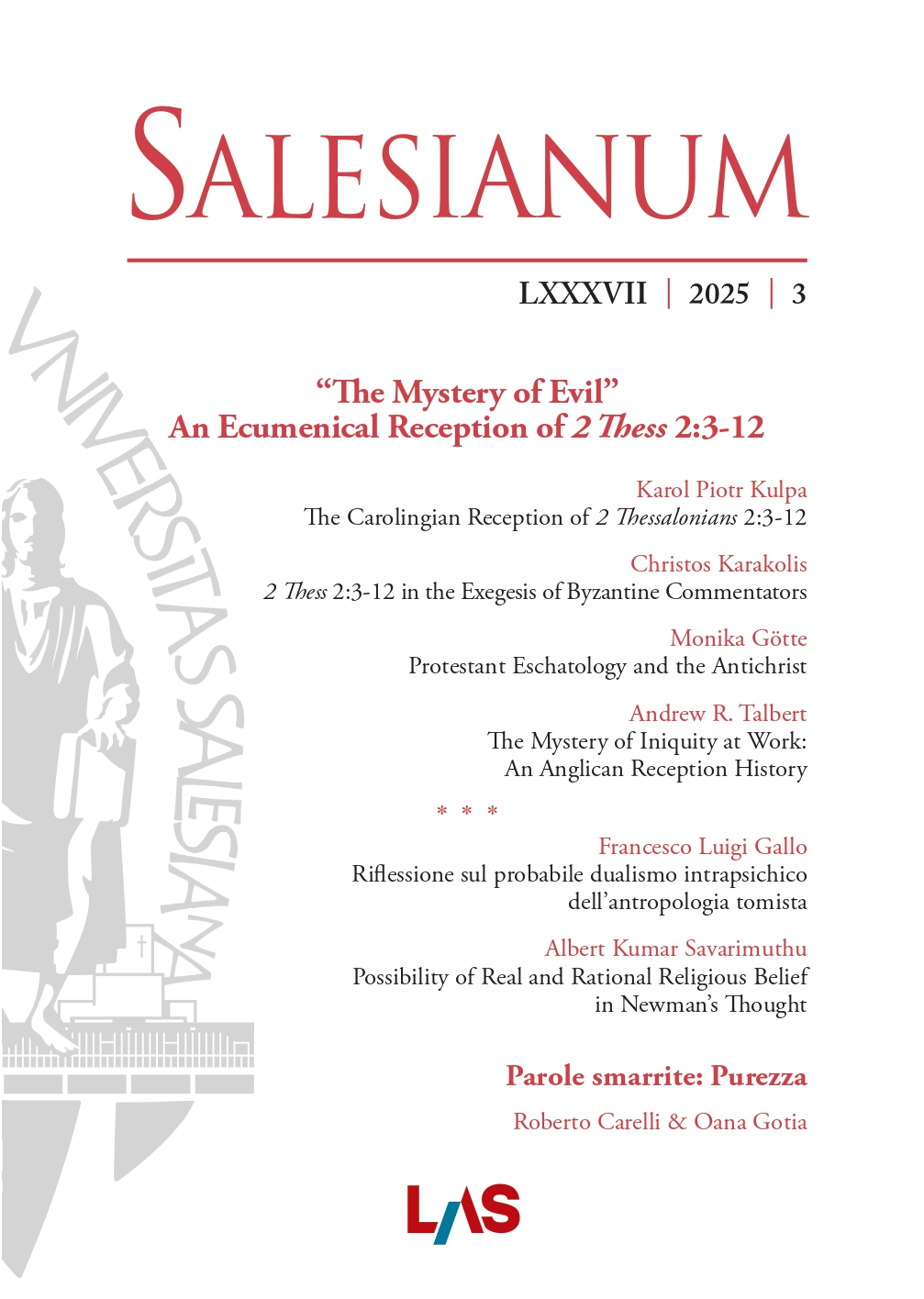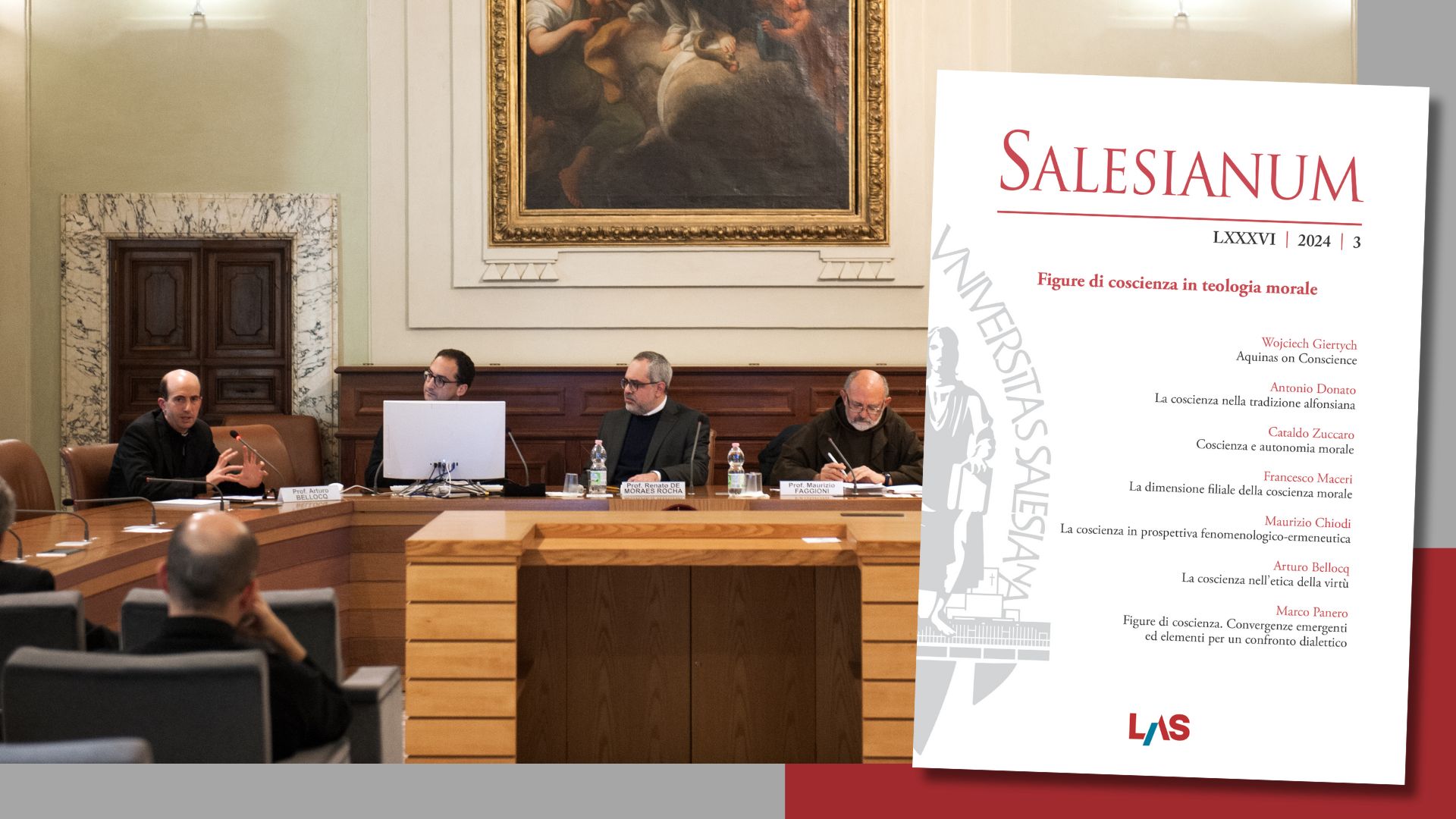The Mystery of Iniquity at Work: An Anglican Reception History
Salesianum vol. 87 (2025) n. 3, 522-544
Sezione: Studia
Sommario
Anglican reception history of 2 Thessalonians 2:3-12 reaches back to the apostolic era and the interpreters of the early church, yet it takes on a decidedly English tone through medieval readers, such as the Venerable Bede and Lanfranc, as well as John Wycliffe and its early revolutionaries. With Parliament’s Act of Supremacy (1534), Henry VIII and England broke with the Roman Catholic Church and joined a litany of voices in opposition to the papacy, who saw in it the mystery of iniquity at work, the falling away, the son of perdition, and the man of lawlessness. This unleashed a bevy of interpretations of the pericope that ranged from identifying the eschatological timeline of the NT with that of England’s Reformation to voices of restraint in the likes of Richard Hooker and Lancelot Andrewes. It was not until the end of the 17th century that apocalyptic realism began to die down and Anglicans became generally more introspective, with the papal the Antichrist tapering off and disappearing by the 20th century. Theologically, this reception history challenges Anglicans to recognize the horror of evil and to respond with vigilance, faithfulness, and hope.
Parole chiave
Keywords
Papacy | Antichrist | Apocalyptic | English politics | Eschatological imminence


